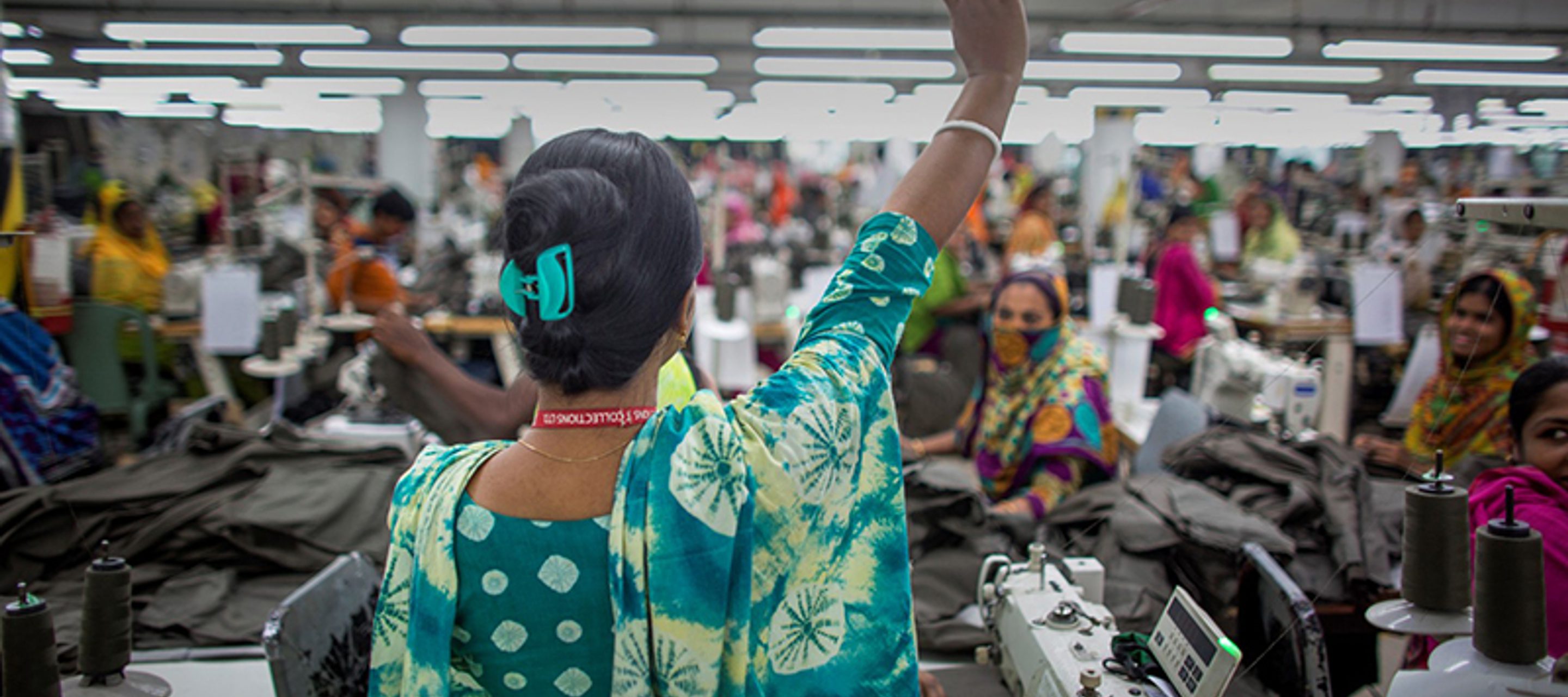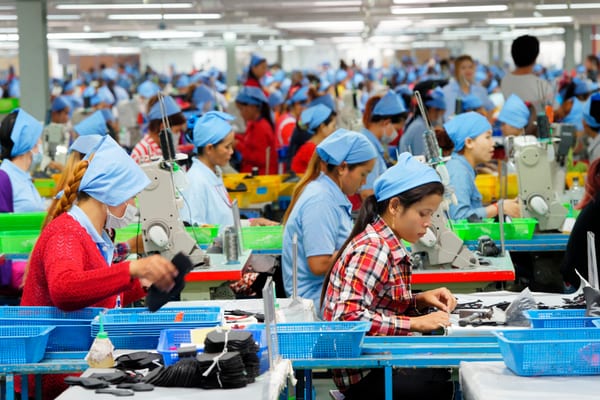Garment worker tragedies: we need to move beyond auditing and address the root cause
22 October 2025 | 5 minute read

Last week a deadly fire killed 16 workers at a textile factory in Bangladesh. Workers were locked in a building with poor fire and safety conditions. There was no fire safety clearance.
Unfortunately, this was not an isolated occurrence; in the last five years, there were 1500 fires in garment factories in Bangladesh.
While fires in garment factories are not uncommon in South Asia, incidents in Bangladesh have received the most attention. Government officials, global brands, and academics often tout the progress the country has made in improving building and fire safety, especially in the last decade following the 2013 Rana Plaza disaster.
Yet despite all the resources devoted towards and scrutiny paid to auditing and monitoring factories to make them safer, why is it that garment workers, the majority of whom produce garments for consumers in the global North, continue to face such precarious working conditions that literally cost them their lives?
The Bangladesh Accord
In the aftermath of the Rana Plaza disaster, the Bangladesh Accord (2013-2021) and its successor, the International Accord have provided a framework to bring together brands, suppliers, and labour representatives to monitor factories, which has resulted in many registered factories becoming safer for workers. However, the Accord also recognises its own limitations. In a condolence message following last week’s fire, the Accord’s website published this statement:
"For over a decade, the collective efforts of brands, trade unions, factories, and civil society partners under the Accord have contributed to workplace health and safety improvements at covered garment and textile factories in Bangladesh. While this includes over 2000 factories employing 2.5 million workers, it represents only part of the Bangladesh’s RMG (Readymade Garments) sector (emphasis added). Ensuring that every worker has access to a safe working environment must remain a shared priority and responsibility. The Accord and the RSC (RMG Sustainability Council) reaffirm their dedication to working with global brands, industry partners, worker representatives and government authorities to build and maintain a culture of health and safety that prevents such tragedies within the RMG sector in Bangladesh."
The Accord was designed to address the conditions in factories which export their production to around the world, mostly to the global north. Ideally, every factory should be included as part of a comprehensive monitoring programme, and the Accord monitors a significant proportion, but still only a subset of the entire sector. Without addressing the underlying cause of why so many factories fall outside the purview of regulation or oversight, deadly tragedies such as this will continue to occur.
An openly held secret holding back progress
In my 2020 edited volume following the Rana Plaza disaster, I wrote about the unregulated, openly held secret of the sub-contracting sector in the Bangladesh textile industry:
While many brands are adamant about their “zero tolerance policy” for unauthorised subcontracting, the policy is largely ineffective in practice. Bangladeshi manufacturers openly discuss the extensive network of small, less compliant factories and how they play an important role in meeting the demands of the larger factories that maintain the primary relationships with Western buyers. The current business models of brands and retailers set incentives for the development of elaborate production networks in Bangladesh. These networks of sub-contractors are how the garment business has remained profitable post-Rana Plaza, despite fierce international competition, labour law reforms, and political blockages.
These sub-contracted factories that fall outside the scope of any sort of governmental supervision, regulation or monitoring are the ones that face the highest risk of severe human rights violations. And even after more than a decade, government oversight continues to be irregular and incomplete, characterized by corruption and administrative loopholes. According to reports, the factory that caught fire last week was outside the purview of Accord.
Focusing only on monitoring factories as the solution to prevent future disasters does not address the root cause behind why these tragedies continue to occur at an alarming rate. Nor does it take into account the extreme pressures suppliers face from brands to produce huge volumes of unrealistic quantities, at the lowest price and in the shortest time possible. It does not factor in the extreme competition and insecurity around future work and creates a perverse incentive structure and an environment of taking risks, even for factories that may have passed all the inspections.
Indeed, in interviews with suppliers, factory owners say repeatedly that they are continually pushed on price; order volumes are not consistent; and there is limited communication with their customers (major brands) about what is realistic. For example, a Bangladeshi supplier I interviewed in 2023 said:
"Buyers still don’t want to increase the C&M [cut and make] charge, [they] put pressure on prices, give us a target price which is even lower, otherwise they say they will go elsewhere…Fighting against each other to grab the orders as much as possible, so we can cover our costs to run our factories…[the price is] not covering our cost, forget [about making a] profit. There is another supplier in the next room who will give them less…"
Yes, global brands do need to commit to auditing factories where their products are manufactured, but that is just the first step. They need to do far more in their due diligence process to ensure that their workers don’t lose their lives while producing clothing for their brand in factories that are hidden from their view. This latest tragedy reminds us yet again that:
- Much of the severe risk is much further down the supply chain, beyond Tier 1. It is not enough for Tier 1 suppliers to pass audits with flying colors. Brands must take responsibility for the hidden corners of the supply chain, those that are out of sight and not under the purview of oversight and regulation.
- Rightsholders need to be a part of the engagement process and have a role in designing solutions. Top-down directives alone do not work and are largely ignored. Without engaging with workers themselves, brands will not have an idea about the reality of the conditions that they face.
- A core part of due diligence must be based on shared responsibility- brands cannot simply hand down a long list of requirements to their suppliers. They must also take responsibility for their part in contributing to human rights risks and violations by recognising and reducing the impact their purchasing practices have on exacerbating human rights risks throughout their supply chain.
To prevent future disasters, we must address the inherent exploitative nature of the global supply chain, the unequal power dynamics between the various stakeholders, and the just-in-time, hyper flexible business model that is at the core of the fashion industry where the voices of workers in the global South are often silenced and their basic needs are not addressed. Until everyone takes responsibility for their actions and the business model shifts dramatically, we will unfortunately continue to bear witness to these types of horrific incidents time and time again.




